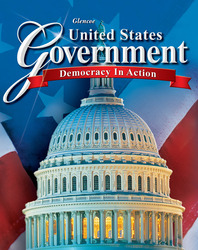United States Government: Democracy in ActionChapter 4:
The Federal SystemStudent Web Activity Lesson PlansIntroduction
A federal system with two strong levels of government—national and state—provides opportunities for political participation, access to government leaders, and lessens the risk of one party having a monopoly of political power. Federalism, however, provides a "sibling rivalry" of debate over public policy. States want to decide their own policies. The national government also wants to steer policy. If the national government is successful at passing a policy, does it also provide funds to the states to implement that policy? What if that policy is a low priority for a state with a tight budget? In this activity, students will learn how the National Governors Association views these same types of questions. Lesson Description
Students will read a document written by the National Governors Association, and answer four questions about its interpretation of federalism. Students will then consider several scenarios and decide whether they should fall under state policy or national policy. Instructional Objectives
- Learners will identify the importance of federalism.
- Learners will form an opinion on state versus national control of policy.
|
Student Web Activity Answers
- The document lists foreign affairs, national defense, the regulation of interstate commerce, and the printing of currency as powers barred from the states.
- The federal government is limited from direct action in many domestic areas and from compelling the states to act as agents of the federal government.
- According to the document, "these lines have become increasingly blurred as a result of the growth in federal grant programs and by more liberal interpretations of the commerce clause that allows the federal government to preempt regulatory areas formerly left to the states and the states' ability to tax."
- Federal grant programs require states and localities to adopt federal requirements in order to qualify for federal assistance.
- Students' opinions and reasoning will vary. They should follow up their statements with an explanation of why they believe they more closely associate with the Republican or Democrat position.
|
 | 




